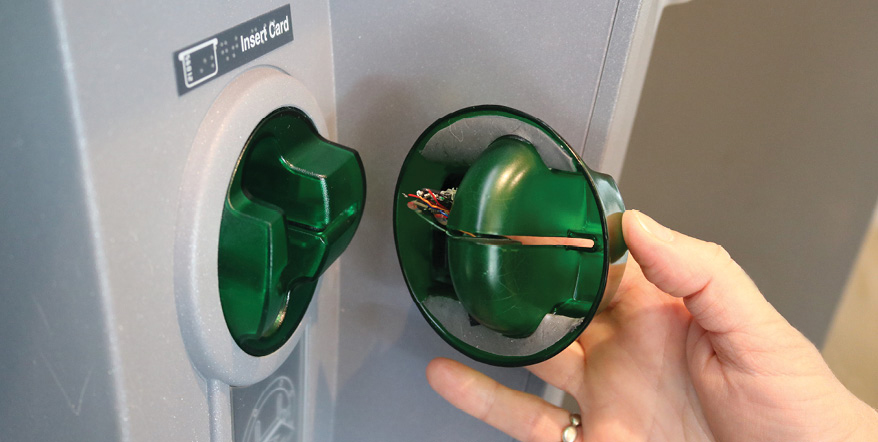
Skimming device cases are becoming more frequent in the United States.
Northwest Community Credit Union has invested in technology to monitor our ATMs for potential placement of skimming devices. However, in order to make sure your card is safe while using an ATM terminal we’ve put together this guide to help you identify and avoid ATM skimmers.
What does skimming mean?
A skimmer is a card reader that can be disguised to look like part of an ATM. The skimmer attachment collects card numbers and PIN codes, which are then replicated into counterfeit cards. Skimming is the type of fraud that occurs when an ATM is compromised by a skimmer.
When you slide your card into an ATM that has a skimmer attached, you’re unwittingly sliding it through the counterfeit reader, which scans and stores all your information from the magnetic strip as well as capturing your PIN from the keypad. This makes skimmers particularly dangerous compared to other forms of card compromise because the collected card data can be used to make ATM cash withdrawals.
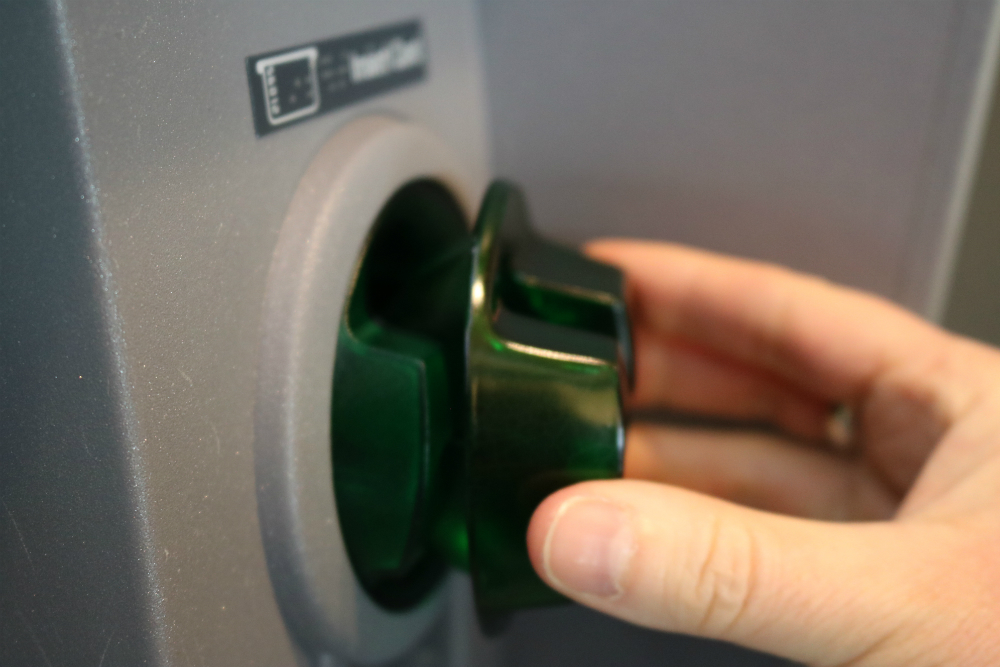
How to check for skimmers
The most frequently used methods of skimming are used on the card reader insert area. Before using an ATM, be observant of the following parts of the ATM:
- PIN keypad
- Card insert slot
Here's a close-up of what one ATM card insert slot normally looks like:
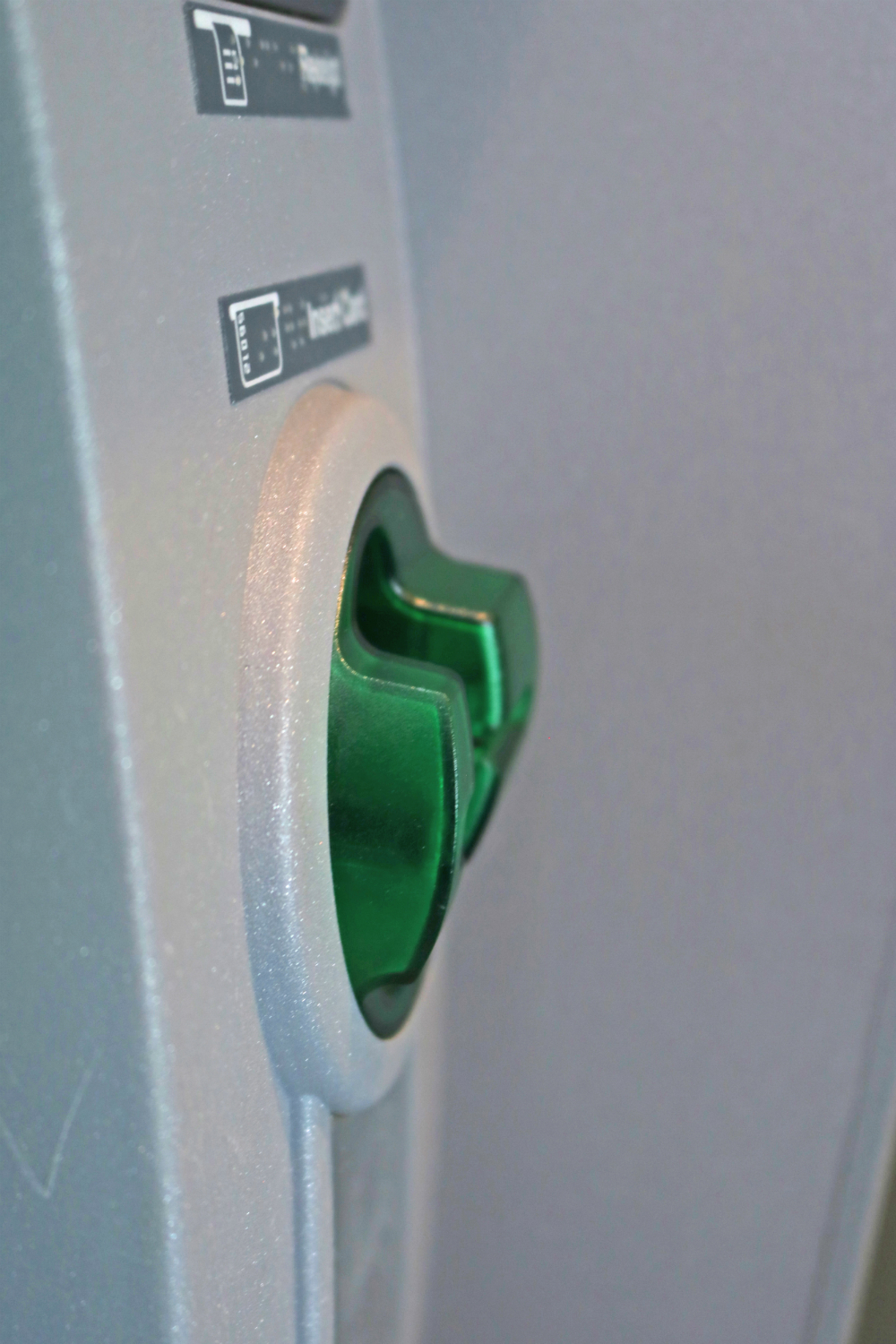
Once a skimmer is placed on this card reader, you can see that it looks slightly different, with the card reader appearing raised or bulkier:
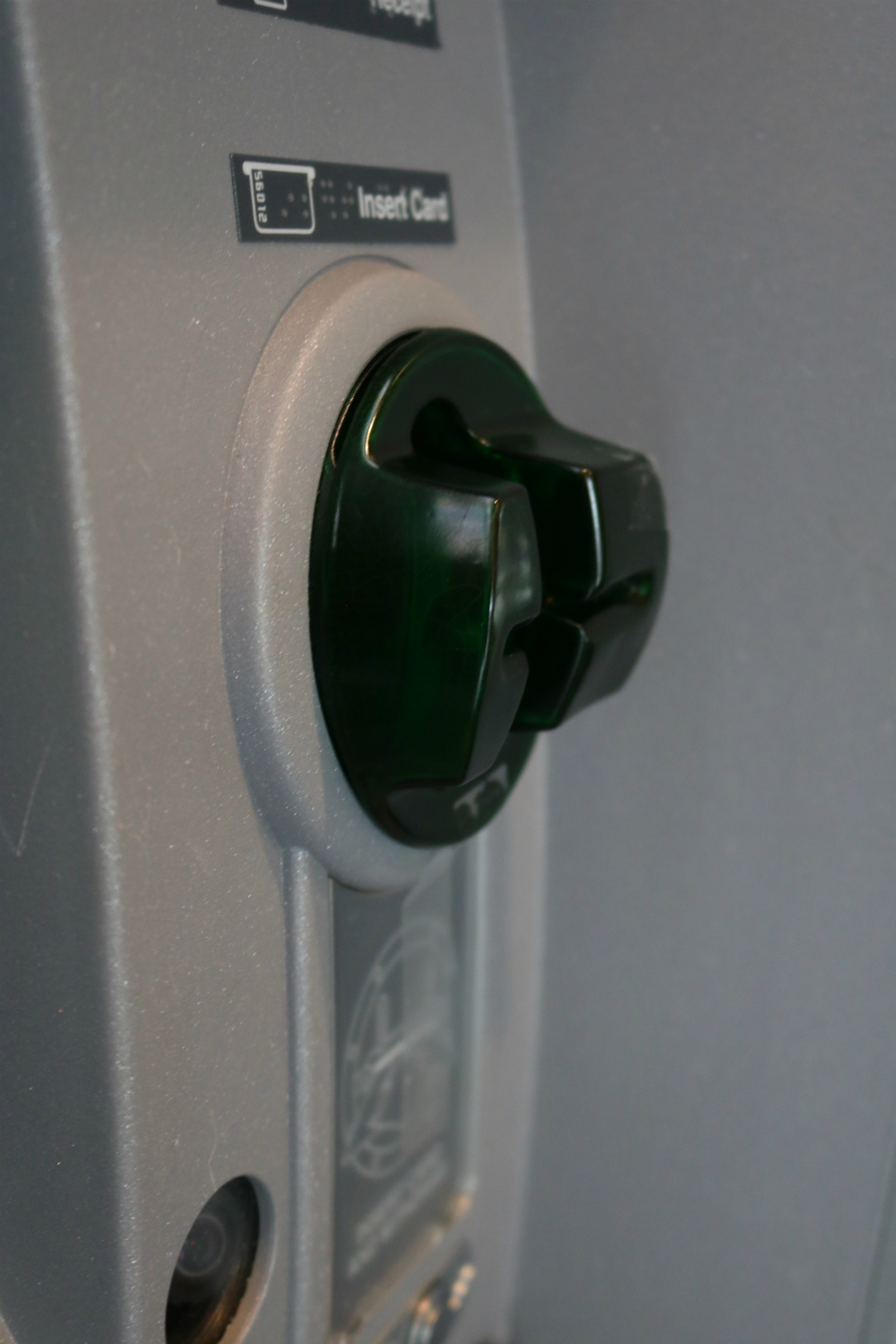
Here's an example of skimmer placed on another type of ATM card reader: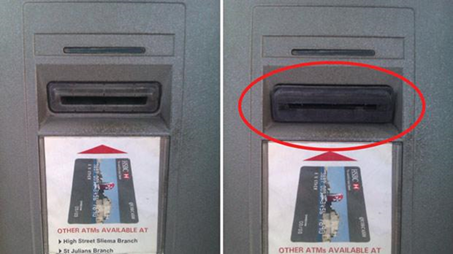
When visiting an ATM, check these parts for:
- Tape and/or sticky glue residue on any part of the ATM
- Bulkiness on the card insert area or the PIN keypad
- Anything hanging from the ATM
- Wiggle the card slot or keypad for loose-fitting attachments
Here's an example of what false PIN pad looks like: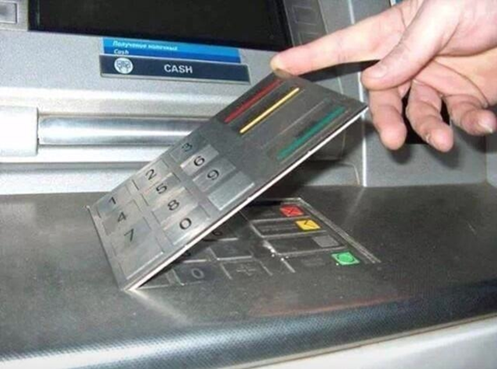
Check for additional attachments
In the photo below, there is a pinhole camera shining down on the keypad. 
This type of camera device is something that can take place at any ATM terminal or point of sale counter where you insert your card. The camera records your entry of a PIN as you type it in. The device will be painted the same color as the ATM or input terminal.
What if I find a skimmer on an ATM?
If you suspect the ATM you’re using may have a skimming devise or if you see something that doesn’t quite seem right, notify the branch so they can take appropriate action. If you notice anything while the branch is closed, contact the police so they can investigate the suspicious activity.
What if I’ve been skimmed?
Make sure you review your transaction history frequently—we suggest at least once a week. If your card has been compromised, catching it early is the best way to minimize losses or inconveniences.
We want to reassure our members that they have zero liability if their card were to be compromised. Report this fraudulent activity within 60 days of the transaction, and we will replace your card and dispute any charges that are fraudulent.
If you have any questions or concerns, call us at (800) 452-9515.
Worried about other scams?
Read More About Other Types of Fraud